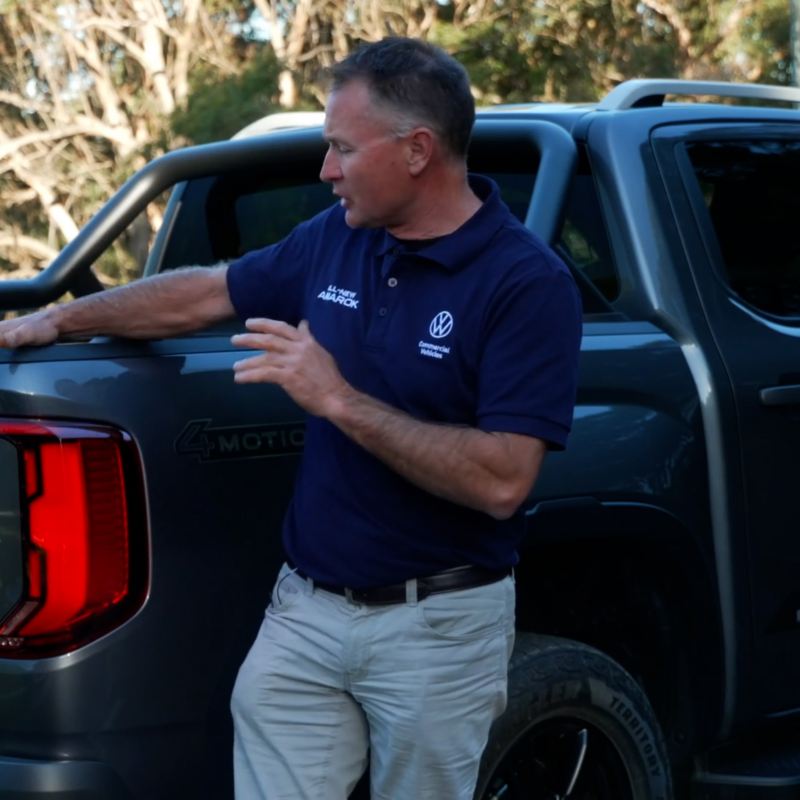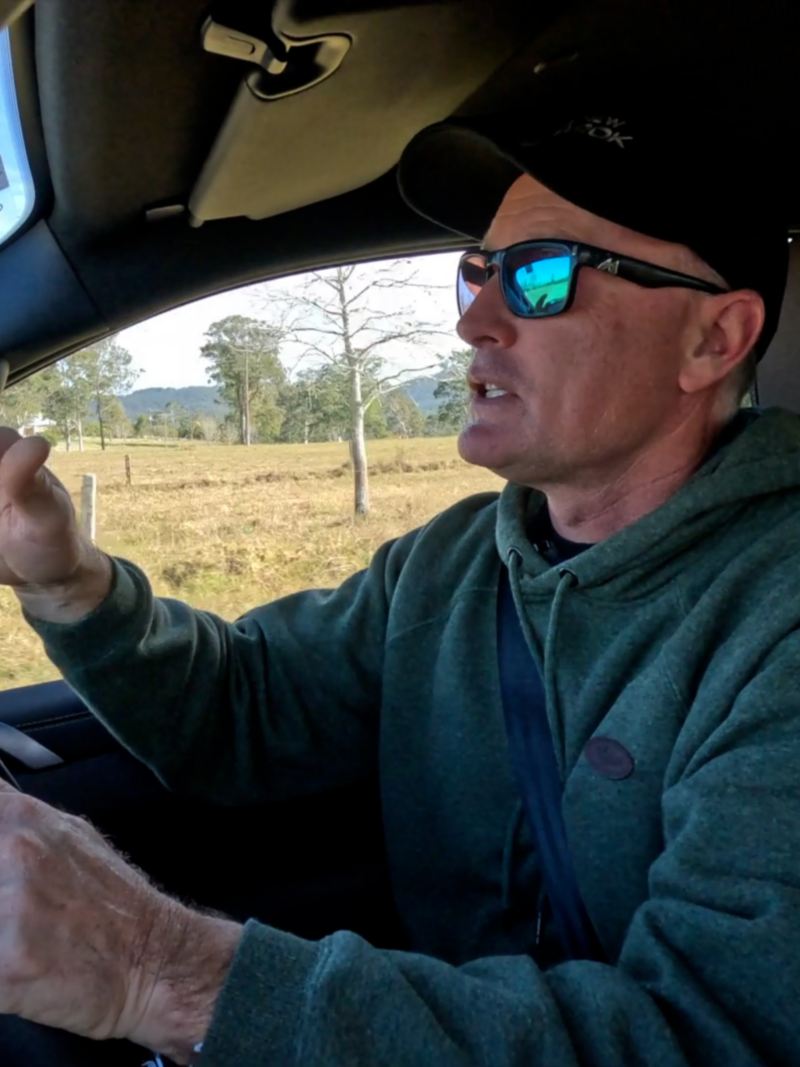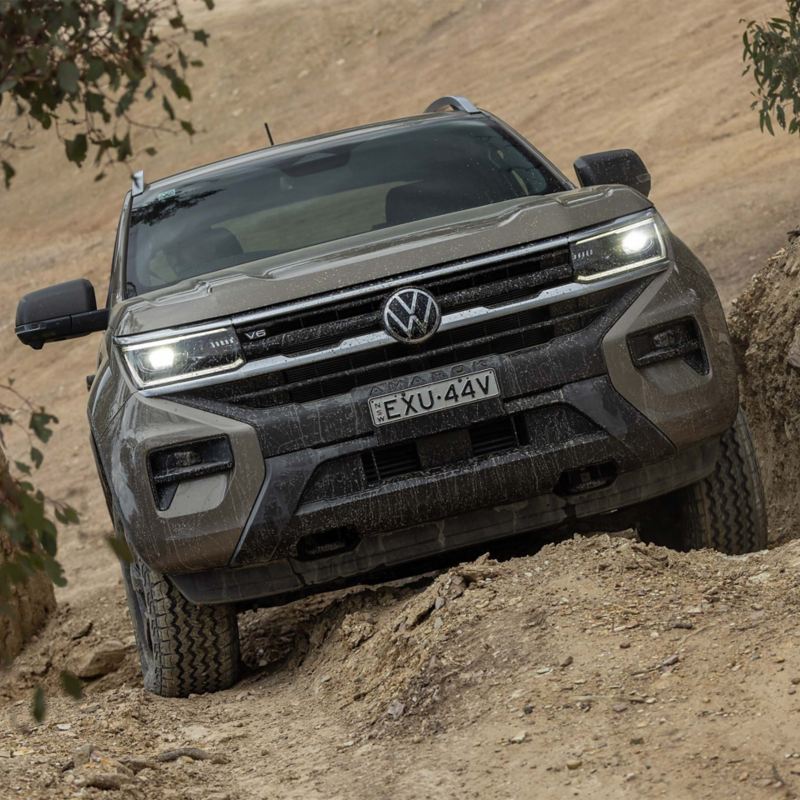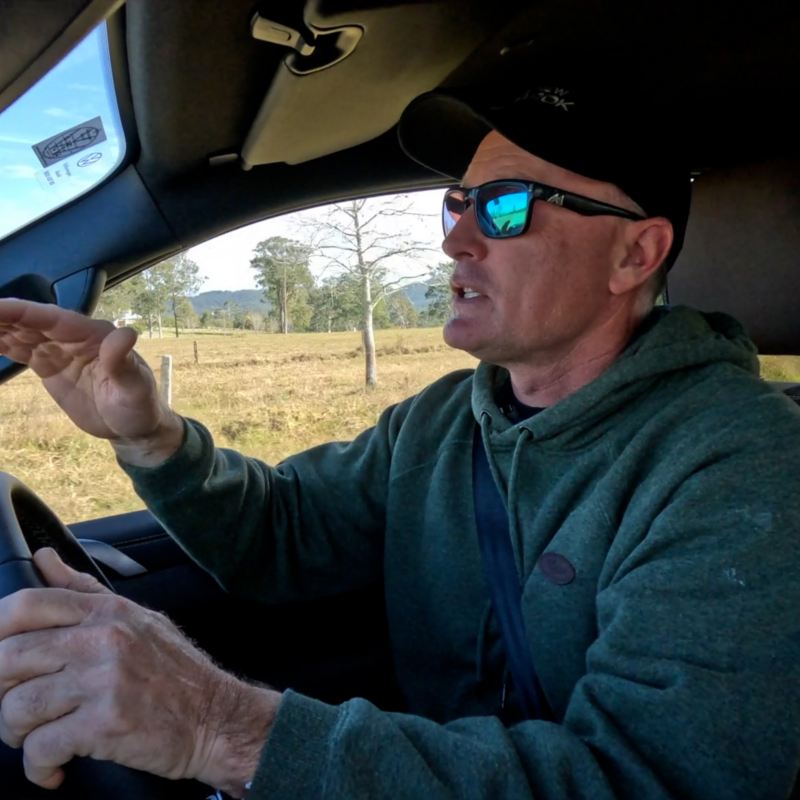How to drive on sand
- Let some air out of your tyres to increase their footprint on the sand, ensuring all four tyres are lowered to the same pressure.
- Select ‘Deep Sand/Snow’ drive mode (Aventura & PanAmericana) or adjust your settings to 4WD high range (all other models).
- Ensure you have any necessary beach driving permits and keep an eye out for potential hazards including dips & depressions in the sand, rocks and incoming tides.
Video Transcript
G’day it’s Michael Guest here, well I’m about to take the Amarok for a run along the beach and put it through its paces, but there’s a few things we need to do before we hit the soft sand.
So firstly, a lot of beaches around Australia do need a beach permit, so the one I got is just an online one or you might have to go somewhere and pay for that. But rangers do patrol a lot of beaches so make sure you tick that box.
Secondly what we're going to do is and we'll go through the process in a minute, is we're going to reduce our tire pressures to give ourselves a bigger footprint on that soft sand. I've got my compressor here so I can pump those tires back up later on. If you don't have a little compressor like that then maybe try and find a beach access point that's close to a service station or a service centre where you can quickly put your tires back up to the right pressure to be on the road.
The other thing we're going to have to do is Select the right driving mode, which is definitely going to be four-wheel drive for the sand driving.
The whole reason why we want to reduce our tire pressures is to create a bigger footprint on the sand so that we don't sink down, it's as simple as that.
This is the Pan Americana version, so it does actually have all-terrain tires standard. So these are 255 65 18 inch, so 255 denotes the width. So our width if we're looking at it in basic terms, is so wide when we reduce our pressure so this this has got about 30 PSI in there at the moment.
So we're probably going to drop it down to about 18 lb, so we're going to go from that width to about there and you think that doesn't sound like much, but it makes a massive difference to supporting the weight of a twin cab four-wheel drive on soft sand.
18b is a good place to start and I might even want to drop that down to 14 PSI and create even a bigger contact patch you know, a bigger load sharing area if that sand's really soft.
Well there you go 18 PSI so it's super important that you go right around and do all four tires the exact same pressure it's time to hit the beach I've actually got my fishing rods in the back so if I'm lucky I might even get a chance to have a cast somewhere. But as soon as I've hopped in got my seat belt on, started the Amarok up, and straight away it's got a symbol that comes up on the dash. Tire pressure low 1.4 bar 1.4 bar so around that 18 PSI and 1.3 on the right rear that's amazing that the sensors can pick that up and tell me where that's at, so I'm just going to go okay because I lowered the pressures and know that's okay.
There's also another little symbol which is a low-pressure tire warning on the bottom left-hand side that'll go away once you increase your pressures once you get back off the beach so we'll just hit okay there. Now we want to select the right driving mode, so we've got options two-wheel drive and all-wheel drive. So all-wheel drive four-wheel drive high range full drive low range, this this is a job for full-drive high range definitely and then we also have diff lock if the sand was super soft and you're a bit worried about a patch you could go into diff lock as well.
But four-drive high range is the one easy way to do. That is just to jump into the big menu on the tech board here and hit vehicle and then drive mode so then we've got normal eco tow hall, slippery, mud ruts and you guessed at the last one's deep snow and sand so if we hit that you see this cool animation comes up and it says “four-wheel drive-in progress” and here's a pretty cool looking shot of an Amarok sliding around in the sand or the snow somewhere and the dial automatically goes from two-wheel drive high range skips, all-wheel drive and goes straight into four-wheel drive that means we're ready to hit the beach.
So, we're on the sand here now so it's really important to keep your momentum up so we just want to keep cruising along don't need to go too hard on the throttle.
The new Amarok's amazing 600 newton meters of torque 10-speed Auto so you've got the right gear really for any situation and we're on that you know pretty much in that maximum torque curve all the time. so power is not an issue we've reduced our tire pressures so our platform our weights distributed across those tire pressures really well but we've just got to keep a really good eye out because you get things like broken bottles sticks even the odd sharp rock and because we have reduced our tire pressures then we've got a bit more of a bulge there so can be exposed to punches so keep an eye on that. Good pair of polarized sunnies on a bright sunny day it can be really hard to see the dips and depressions in the beach so that's another thing as well and keep an eye out for people coming towards you and make your decisions early if you're going to stick to one side or the other. I know there's basic road rules to follow but quite often somebody will have a set of tracks that they're driving in.
What I've done is I've found a set of tracks here now from somebody else who's been down the beach, so the sand is already compacted that's a great place to be driving.
It's great to see that most beaches these days are doing Reclamation work for Native grasses and shrubs and make sure you stay off those.
Don't forget beaches are affected by tides and depending on what part of the country you're in you could have some great big tides and if you come onto the beach at low tide, that's great but once that tide comes back in you might find that your access Narrows right up.
Once you get off the beach don't forget to reinstate those tire pressures back to that road driving pressure but I'll tell you the beach looks fantastic at the moment I'm heading off for a fish - catch you next time.




